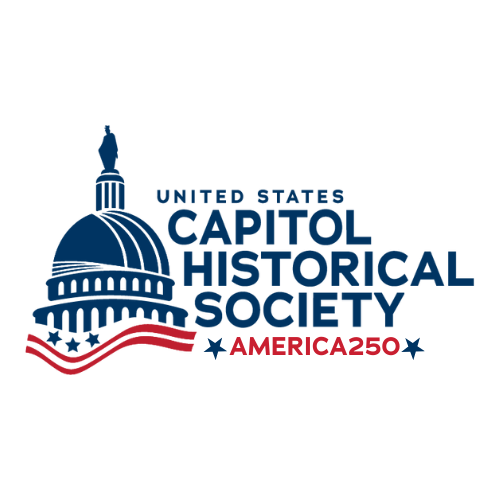In 1789, the United States Congress met in New York City’s Federal Hall—our nation’s first capitol under the U.S. Constitution. One year later, Congress passed the Residence Act which established a permanent capital along the Potomac River and made Philadelphia the temporary seat of government. During this decade, there was no official police force whose duty it was to protect Members of Congress or the building they worked in. In fact, there was no such dedicated force dating to the First Continental Congress in 1774 through Thomas Jefferson’s election in 1800.
That year, Congress and our government moved from Philadelphia to Washington, D.C., where they remained ever since. In 1801, Congress passed “An Act Concerning the District of Columbia,” which provided the city a marshal and the appointment of justices of the peace. Shortly thereafter, a man named John Golding was hired as the U.S. Capitol building’s first watchmen. Legally, he only had the authority to detain those suspected of damaging government property.
In fact, during the earliest history of the Capitol, visitors had total freedom to go where they wanted. “It was, indeed, impossible,” the Architect of the Capitol lamented, “to distinguish those who ought and ought not to have entered.” The Architect, Benjamin Henry Latrobe, also reported that walls were defaced and furniture destroyed. For these reasons, early Architects urged Congress to create a police force for their protection and the building in which they served. After all, it was the “People’s House,” not the People’s Animal House.
By 1827, multiple incidents took place that reinforced the need for a Capitol police, including the unlawful removal of Capitol fencing so that cattle could graze on Capitol grounds. Altogether, President John Quincy Adams finally requested that Congress create a regular police force. Thus, on May 2, 1828, a new law expanded Washington, D.C.’s police regulations to include the Capitol and Capitol Square. This is the date that the Capitol Police considers its founding because the force now had full police authorities. In the next decade, their responsibilities grew to guarding the Capitol for 10 hours a day when Congress was not in session, 15 hours a day when it was, and even serving as guides to Capitol visitors.
By the onset of the Civil War, Washington, D.C. was a city on the edge. The Union capital was surrounded by Confederate Virginia and many Southern sympathizers. Because the city was full of Union soldiers and federal workers, it badly needed professional policing outside Capitol Hill. President Lincoln therefore directed officials to study the New York City Police Department in order to form a comparable agency in Washington, D.C.
Then, on August 6, 1861, Congress passed a bill to create the Metropolitan Police Department of the District of Columbia. The Department’s early years were not without challenges: authorized to hire no more than 150 patrolmen, officers worked 12-hour shifts, seven days per week, with no days off or vacations allowed; the Department issued no badges or equipment, and officers had to acquire their own handguns.
But since that time, the MPD and Capitol Police continued to grow in size, function, and professionalism and served as critical players in major historical events. For instance, the MPD assisted in the 1865 manhunt for John Wilkes Booth. And there is some evidence that days earlier, the Capitol Police stopped Booth from allegedly chasing Lincoln during his inauguration.
Next, the MPD caught President Garfield’s assassin before he could flee the Baltimore and Potomac Railroad Depot in 1881. The MPD also helped thwart assassination attempts against Presidents Truman and Reagan in the decades to follow. Together, the Capitol Police and MPD continue to help secure high-profile public events such as joint sessions of Congress, presidential inaugurations, parades, state funerals, and first amendment activities—to ensure that the touchstones of our democratic experiment are safely available to all.
During much of their shared history, the role of the Capitol chief of police was held by MPD Captains and Assistant Chiefs in an ex-officio capacity. This changed in 1979 when President Jimmy Carter signed a Public Law that established a Capitol chief of police as its own position. With that law, the Capitol Police made its transition to the modern era.
Just as the police forces work to make the democratic experiment available to all, they also work to make protecting the democratic experiment available to all as well.
In 1969, Shirley Chisholm became the nation’s first African American Congresswoman. Five years later, the Capitol Police hired its first four female officers, including Arva “Marie” Johnson, who became the first African American Capitol Policewoman. For the first time in our history, an African American Capitol Policewoman protected an African American Congresswoman. It was an extraordinary achievement.
Today, both forces are representative of the nation whose capital they serve in. Nearly 25% of all MPD’s sworn officers are women—among the highest numbers in the nation—and approximately 70% of MPD’s sworn members are black, Hispanic, or Asian.
Every day, these brave men and women of all backgrounds put their lives on the line to protect something greater than themselves: the American way of life. We thank them their courage. Most importantly, we thank them for their sacrifice.
January 6, 2021, may have been their most challenging hour. At 1:00 pm ET, Members of Congress gathered for a joint session to count the votes of the Electoral College. Soon thereafter, rioters clashed with law enforcement outside the Capitol and breached the building. By 4:00 p.m. ET, Congressional leaders were evacuated from the Capitol. And by day’s end, at least 140 officers were injured.
But through their bravery, Congress was able to reconvene and finish their work—and that of our democracy.
USCHS President/CEO Jane L. Campbell delivered these remarks during the presentation of the 2022 Freedom Award to the United States Capitol Police and Metropolitan Police Department of the District of Columbia. The brief history is based largely on USCP’s “Our History” and MPD’s “Brief History of MPDC”, and was edited by Yianni Varonis and Samuel Holliday.








